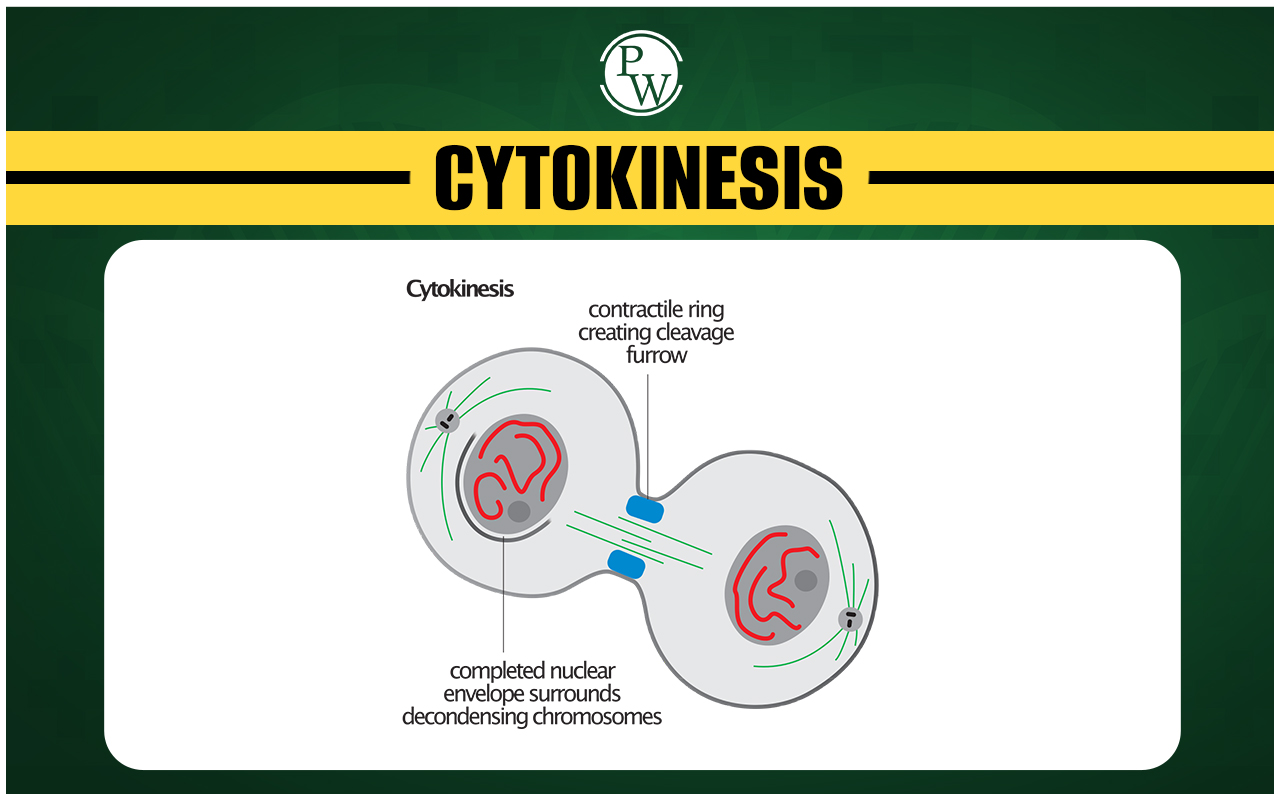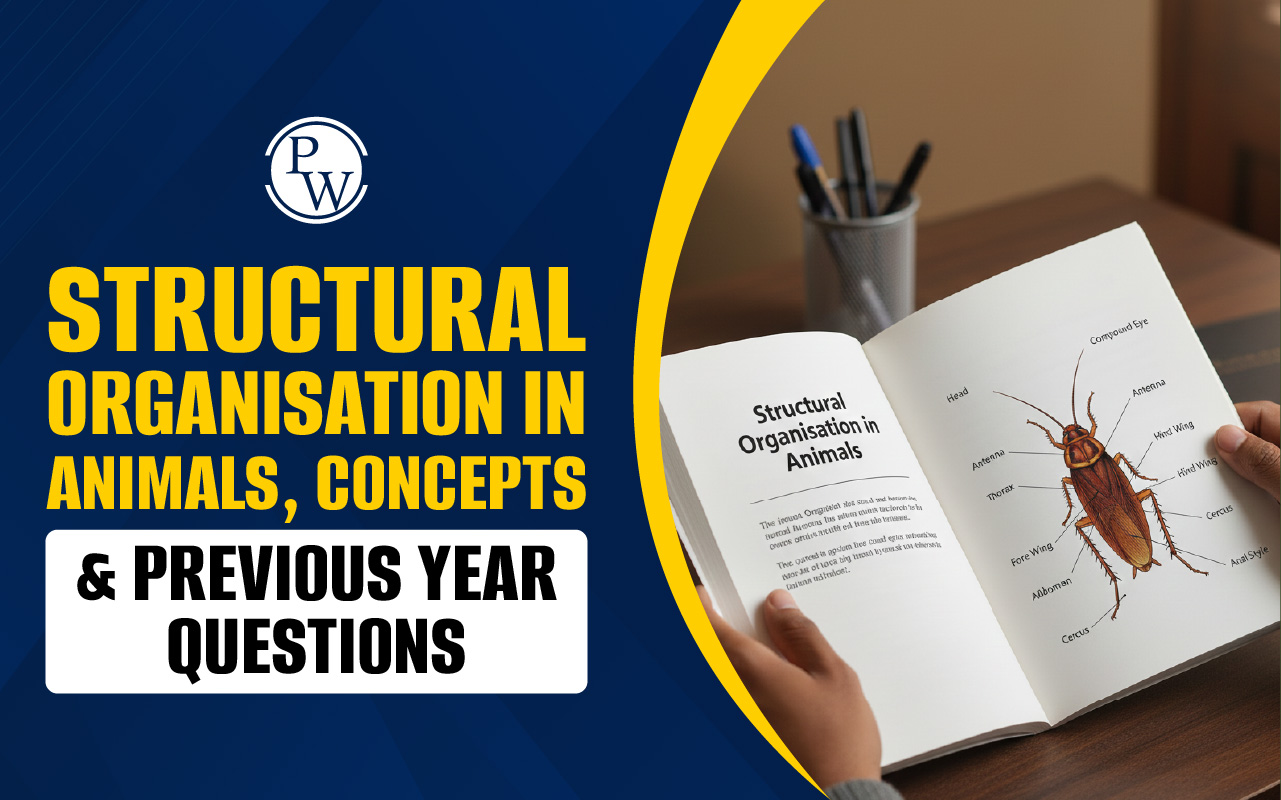

Cytokinesis is the process of dividing the cytoplasm to form two daughter cells after nuclear division. It is crucial for ensuring each new cell has the necessary cellular components to function properly. Understanding cytokinesis is important for the NEET Exam , as it forms a key part of the cell cycle and cell division topics in the NEET syllabus .
Cytokinesis Definition
Cytokinesis is the process of cell division that splits the cytoplasm of a parent cell into two daughter cells. It occurs alongside mitosis and meiosis, ensuring that each daughter cell receives one nucleus. Cytokinesis begins in anaphase and continues through telophase, where a contractile ring forms around the center of the cell. This ring tightens, creating a cleavage furrow that eventually divides the cell into two, each surrounded by its own plasma membrane.Types of Cytokinesis
Cytokinesis occurs differently in plant and animal cells, reflecting their unique structures and requirements.Cytokinesis in Animal Cells
Cytokinesis in animal cells occurs through a process known as cleavage. During cell division, a ring of protein filaments called the contractile ring forms just beneath the cell membrane at the center of the cell. As this ring tightens, it pulls the membrane inward, creating a cleavage furrow. The furrow continues to deepen until the cell is divided into two distinct daughter cells, each containing its own nucleus and cytoplasm. Cytokinesis in animal cells typically begins during the anaphase of mitosis or meiosis and continues through telophase, ensuring that the two newly formed cells receive equal portions of the cytoplasm and other cellular components. This process is essential for proper cell division and plays a critical role in the development of multicellular organisms.Cytokinesis in Plant Cells
In plant cells, cytokinesis occurs differently than in animal cells due to the presence of a rigid cell wall. Instead of a contractile ring, a structure called the cell plate forms in the center of the parent cell. This cell plate is created by vesicles from the Golgi apparatus that carry materials such as phospholipids and sugars. These vesicles move to the middle of the dividing cell, where they fuse together and form the initial cell plate. As the cell plate expands, it eventually connects with the cell membrane, dividing the parent cell into two daughter cells. The materials in the cell plate harden to form a new cell wall between the two cells. This process ensures that both daughter cells receive equal portions of cytoplasm and other cellular components. Cytokinesis in plant cells is essential for their growth and development, especially since it establishes a strong barrier that separates the two new cells.Process of Cytokinesis
Cytokinesis is the last stage of cell division, during which the cytoplasm of a parent cell separates into two daughter cells. The process differs between animal and plant cells, but the overall goal is to ensure that each new cell has the necessary cellular components for survival and function.- Initiation: Cytokinesis begins during anaphase and continues through telophase, after the chromosomes separate.
- In Animal Cells : A contractile ring forms at the cell's center, pulling the membrane inward to create a cleavage furrow. The ring tightens, splitting the cell into two daughter cells.
- In Plant Cells: A cell plate forms at the center, as vesicles from the Golgi apparatus fuse. This plate becomes the new cell wall, dividing the cell.
- Completion: The cytoplasm divides fully, resulting in two daughter cells, each with its own nucleus and cellular components.
Function of Cytokinesis
- Cytoplasmic Division : Cytokinesis ensures the complete division of the cytoplasm between the two daughter cells, finalizing the process of cell division after nuclear division (mitosis or meiosis).
- Equal Distribution of Organelles : It guarantees that each daughter cell inherits a balanced share of organelles, cytoplasmic contents, and cellular components necessary for their proper function.
- Facilitates Cell Growth and Reproduction : Cytokinesis is essential for cell reproduction, allowing organisms to grow and replace cells through the production of new, functional daughter cells.
- Supports Tissue Repair and Development : In multicellular organisms, cytokinesis aids in the repair of damaged tissues and plays a critical role in the overall development and maintenance of the body.
- Prevents Abnormal Cells : By ensuring proper separation of the cytoplasm, cytokinesis prevents the formation of abnormal cells, such as multinucleated cells, which could affect normal cellular function.
Difference Between Cytokinesis and Karyokinesis
Karyokinesis and Cytokinesis are key stages in cell division. Karyokinesis, occurring in the M phase, involves the division of the nucleus, ensuring that genetic material is evenly distributed between daughter nuclei. This process is crucial for maintaining genetic integrity.
Cytokinesis follows karyokinesis and is essential for completing mitosis. It involves the division of the cytoplasm and organelles between two daughter cells. Cytokinesis depends on karyokinesis to ensure proper cell division, resulting in two genetically identical cells. The table below highlights the differences:| Difference Between Cytokinesis and Karyokinesis | ||
|---|---|---|
| Category | Karyokinesis | Cytokinesis |
| Definition | Refers to cell division during mitosis, ensuring genetic material separation. | Marks cell division conclusion, finalizing reproductive process after meiosis. |
| Order | Initiates cell division as the primary stage. | Follows karyokinesis, dividing cytoplasm as the subsequent stage. |
| Significance | Vital for cell regeneration and renewal post-division. | Indispensable for completing cell division, driven by daughter cell nuclei. |
| Procedure | Equally distributes genetic material between daughter cells. | Equitably distributes cellular substances and cytoplasm. |
| Function | Orchestrates chromosomal movement and spindle formation. | Includes processes like cell plate development and embryonic cleavage. |
| Complexity | Involves complex and sequential genetic material division. | Represents a relatively straightforward process facilitating cell division. |
| Varieties | Does not exhibit distinct types. | Can be asymmetrical or symmetrical, depending on how the cellular components are distributed. |
MCQs of Cytokinesis
Q1. Division of the nucleus without being followed by cytokinesis results in:
- Phragmoplast
- Polyploidy
- Uninucleate condition
- Multinucleate condition
Q2. Division of the cytoplasm is considered as the:
- Mitosis
- Cytokinesis
- Synapsis
- None of these
Q3. Which of the following statements is True?
- At the time of cytokinesis, organelles like mitochondria and plastids get distributed between the daughter cells.
- Cell plate represents the middle lamella between the walls of two adjacent cells.
- Both 1 and 2
- None of these
Answers of MCQs of Cytokinesis
Ans1 . Multinucleate condition,| NEET Exam Important Links | |
|---|---|
| NEET Biology Syllabus | NEET Biology Diagrams |
| NEET Biology MCQ | NEET Biology Chapter wise Weightage |
| NEET Biology Notes | NEET Previous Year Question papers |
Cytokinesis FAQs
Q. What is the process of cytokinesis?
Q. What is cytokinesis and karyokinesis?
Q. What are the two types of cytokinesis?
Q. What is cytokinesis?
Q. What is the difference between mitosis and cytokinesis?












